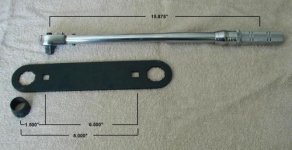jackie schmidt
New member
Jec
Without being too rude, I will say that you are getting some bad advice from some shooters who seem to be ignorant of this entire concept of how threaded joints work.
The link over to Sniper Hide isn't much better.......jackie
Without being too rude, I will say that you are getting some bad advice from some shooters who seem to be ignorant of this entire concept of how threaded joints work.
The link over to Sniper Hide isn't much better.......jackie
Last edited:



